Original WWII 1942 "RESTRICTED" Operation Weserübung U.S. War Intelligence Report with Maps & Diagrams
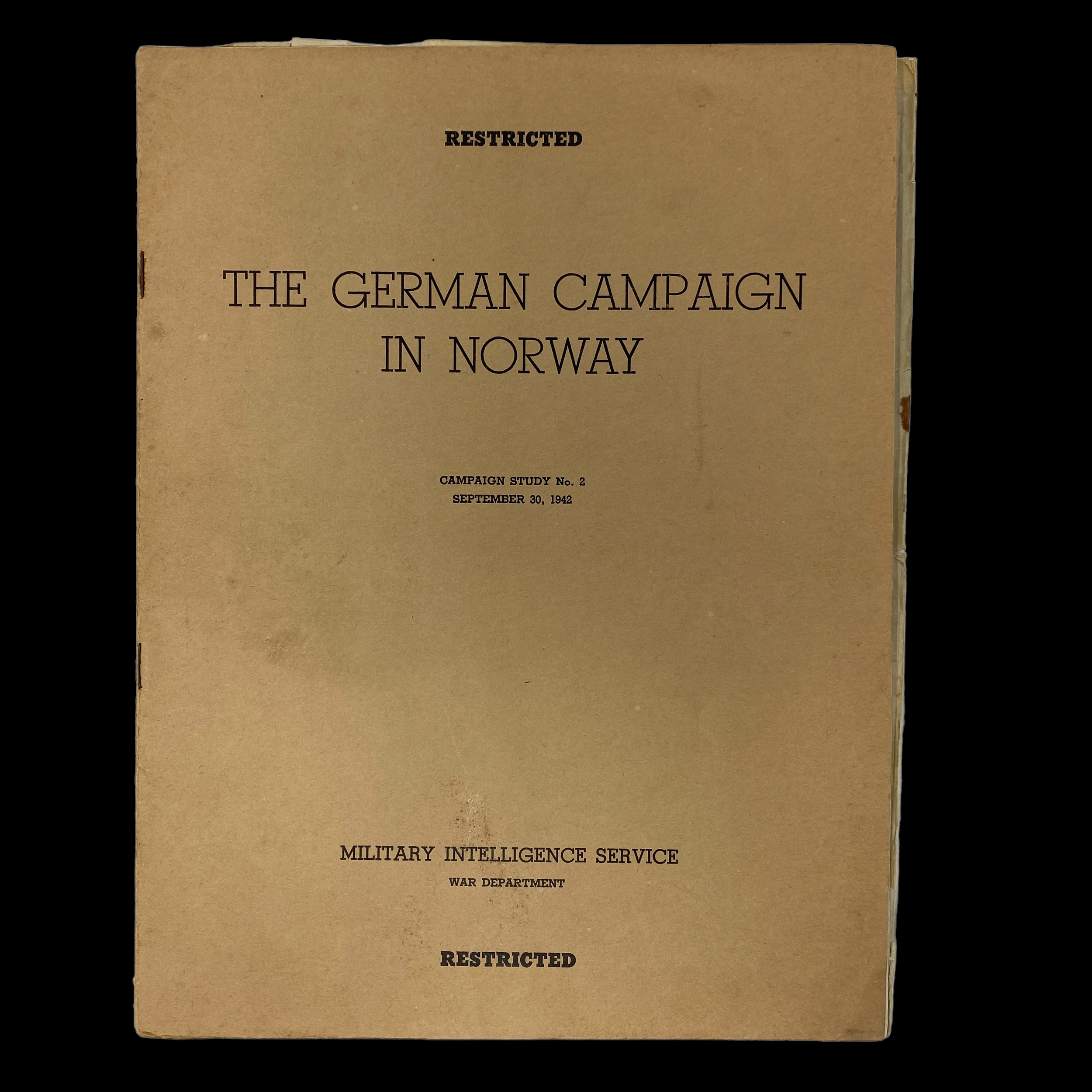

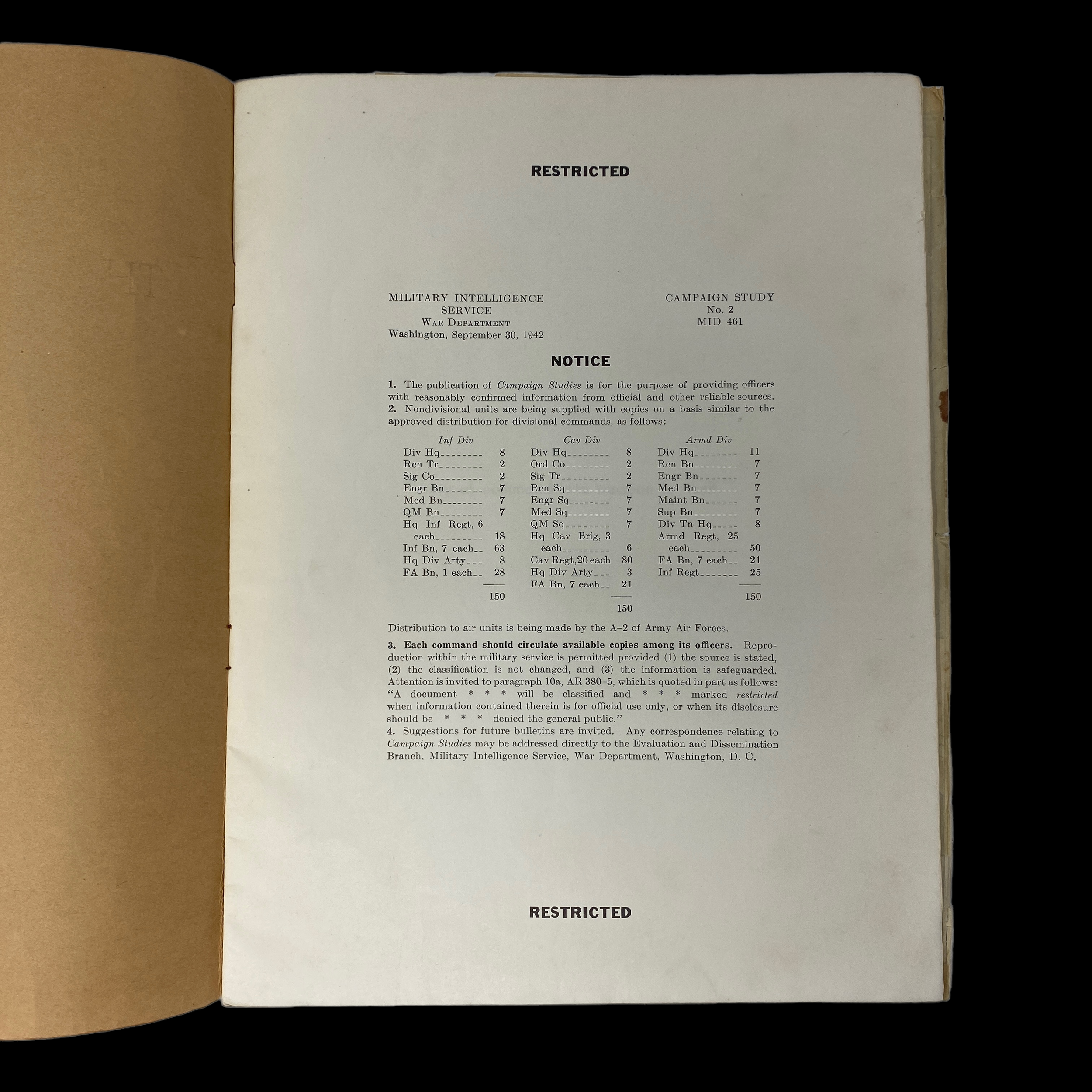


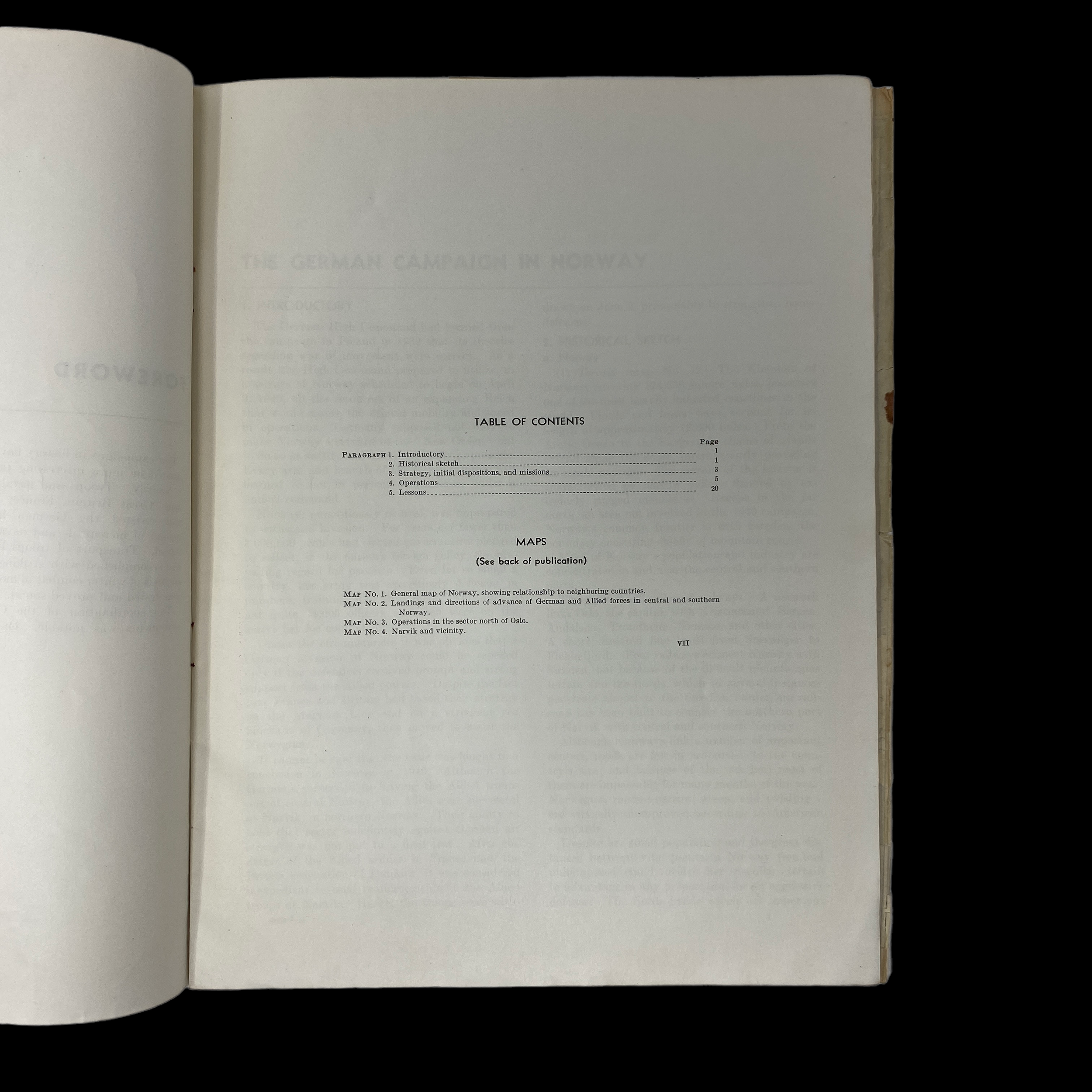

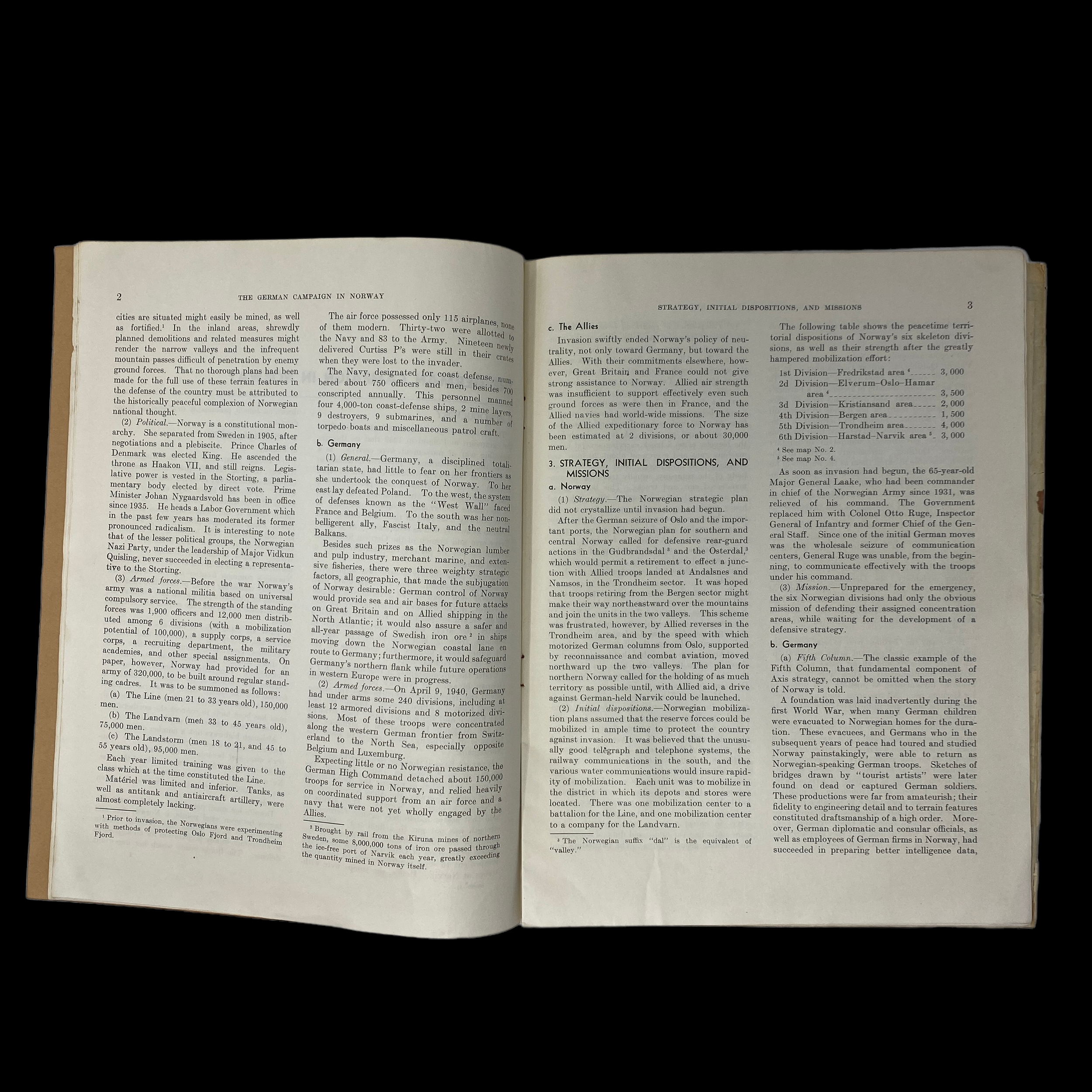
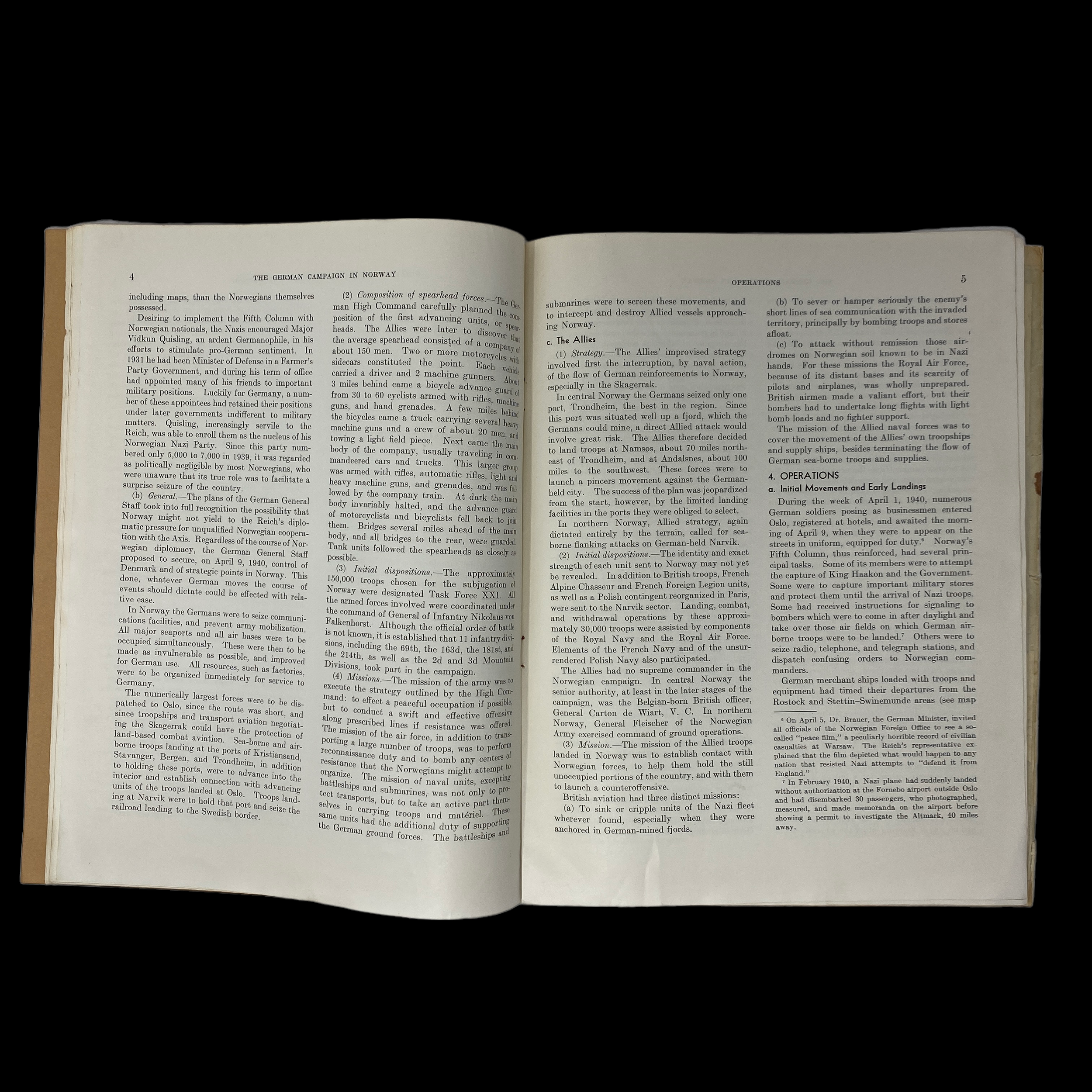
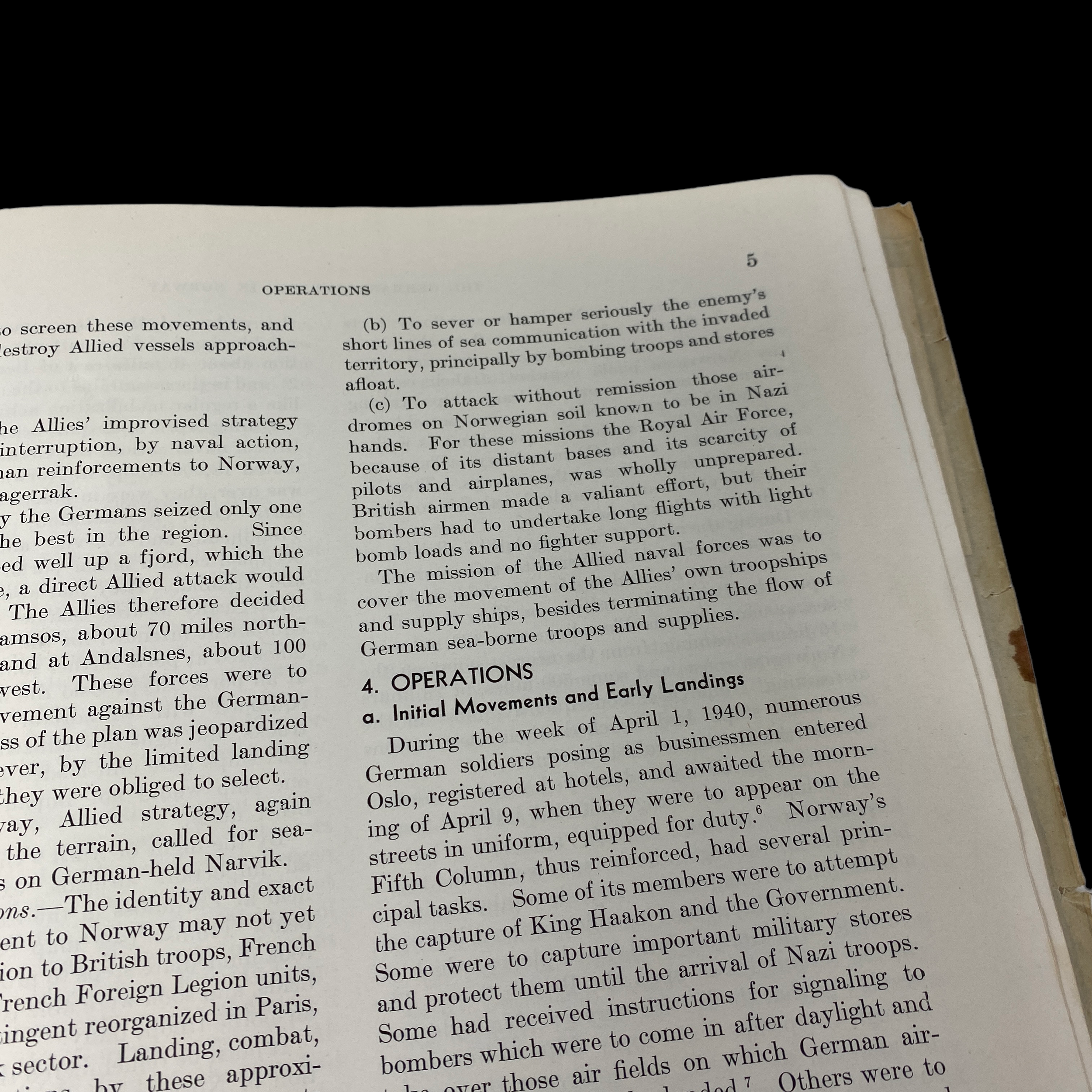
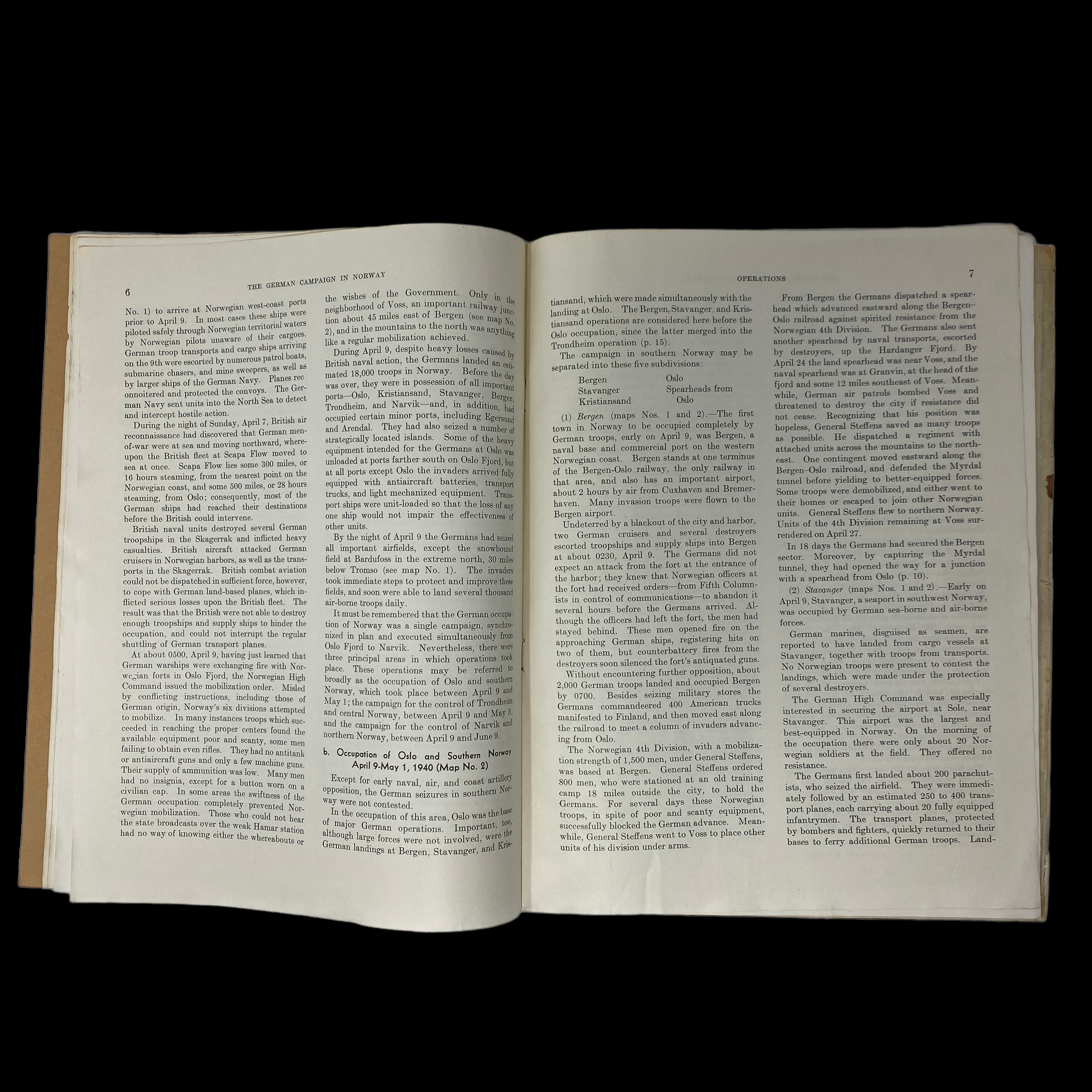

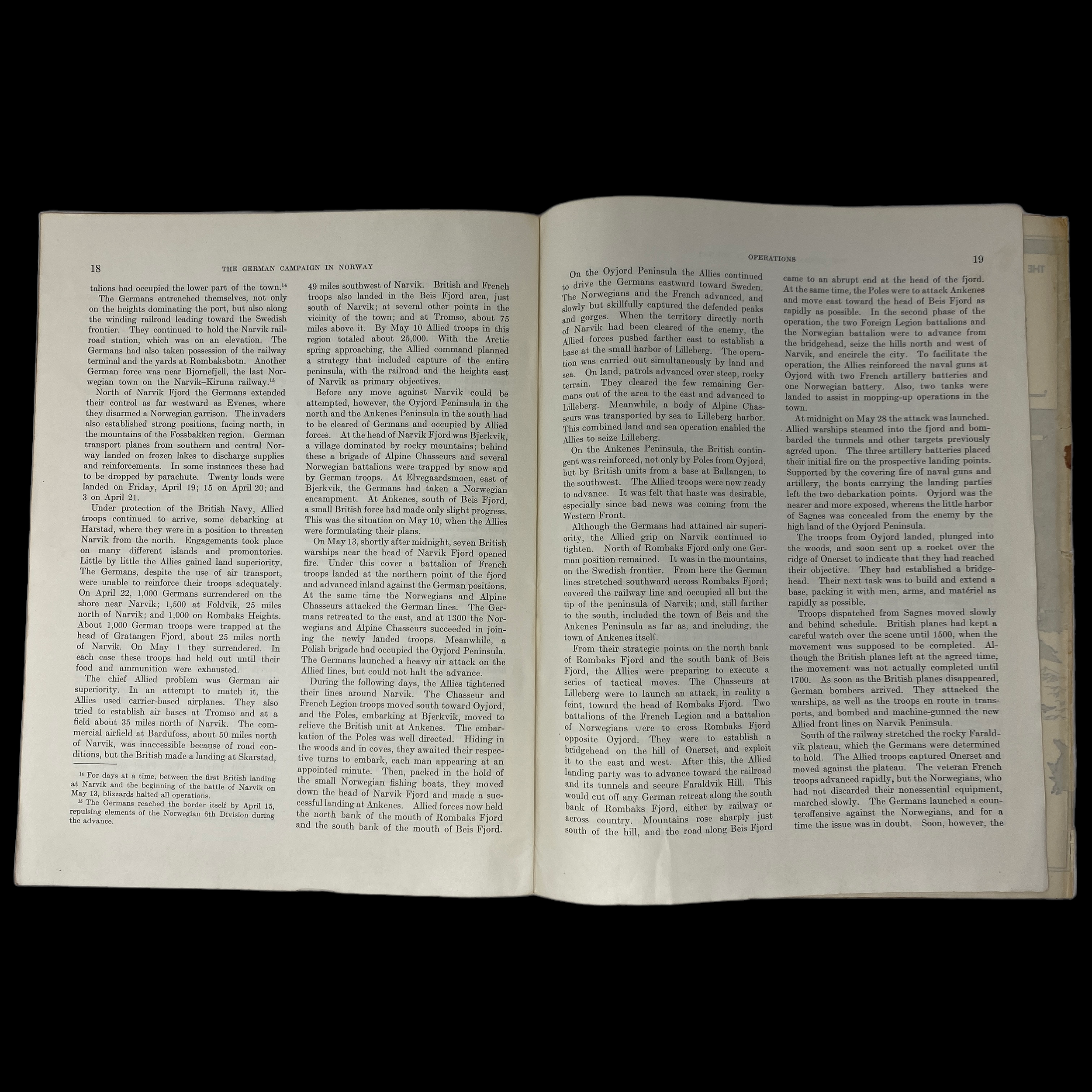
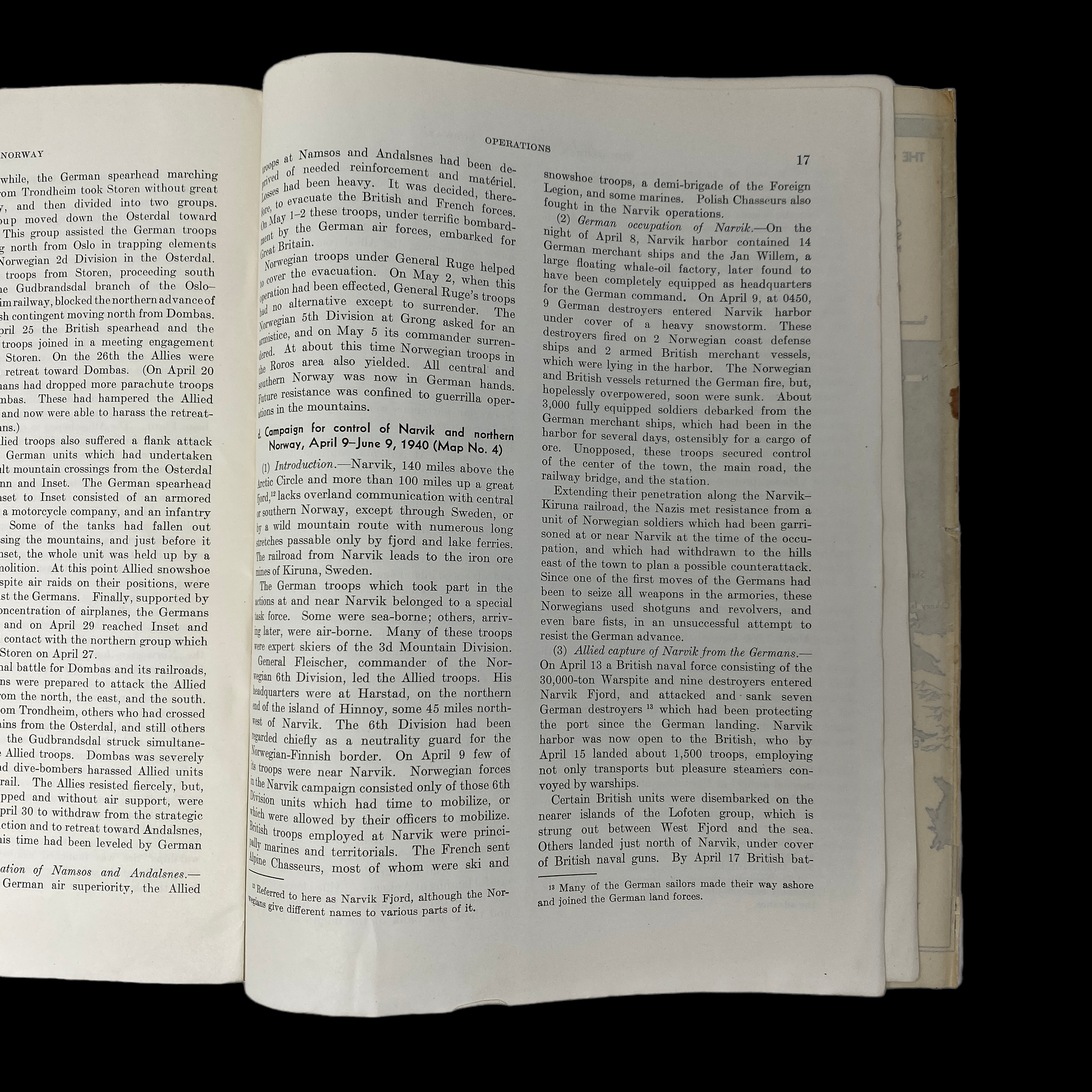


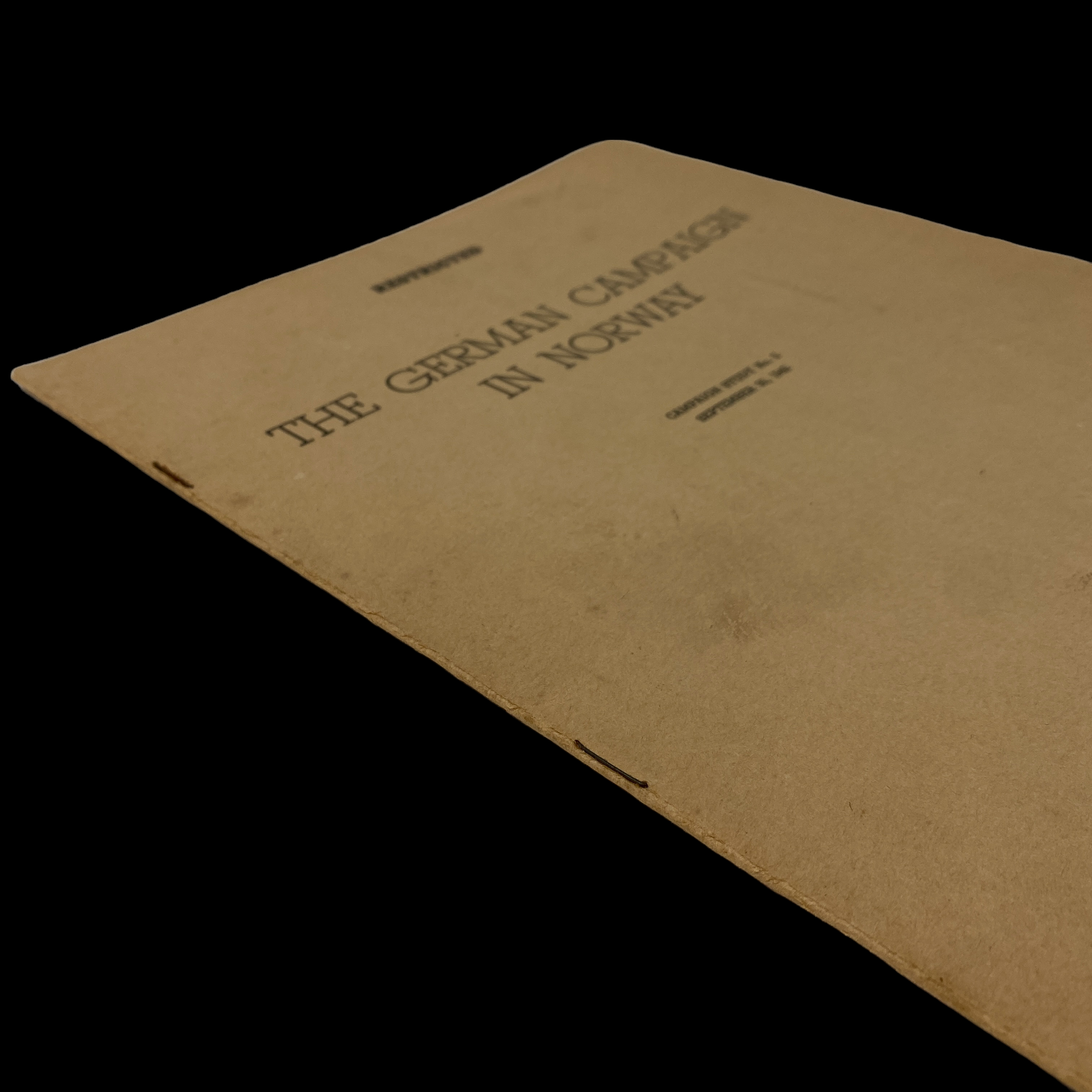






Original WWII 1942 "RESTRICTED" Operation Weserübung U.S. War Intelligence Report with Maps & Diagrams
Comes with hand-signed C.O.A.
For sale is an original WWII US military intelligence services war Department report regarding the German campaign in Norway. This report, study no. 2, is dated September 30th, 1942 and provides a detailed analysis of the German campaign in Norway during the early years of World War II.
The German campaign in Norway, also known as Operation Weserübung, was a military operation launched by the German armed forces in April 1940. The goal of the operation was to quickly occupy and secure key strategic locations in Norway, including the capital city of Oslo and the important port of Narvik.
This original WWII report, produced by the US military intelligence services, provides a detailed analysis of the German campaign in Norway, including information on the tactics and strategies used by the German forces, as well as the strengths and weaknesses of the Norwegian defense. The report also includes detailed maps and illustrations, as well as analysis of the political and economic impact of the German campaign.
The German campaign in Norway, also known as Operation Weserübung, was a military operation launched by the German armed forces in April 1940. The goal of the operation was to quickly occupy and secure key strategic locations in Norway, including the capital city of Oslo and the important port of Narvik.
The decision to launch the campaign in Norway was made by the German leadership, led by Adolf Hitler, in order to secure access to vital resources, such as iron ore, that were being transported from Sweden to Germany through Norway. Additionally, the German military believed that securing Norway would provide them with a more defensible border against a potential Allied invasion from the north.
The German campaign in Norway began on April 9, 1940, with a coordinated attack on several key locations in the country. The German forces, consisting of both ground troops and naval units, quickly overwhelmed the Norwegian defenders and succeeded in occupying many of the key strategic locations they had targeted.
One of the key objectives of the campaign was the capture of the Norwegian capital city of Oslo. The German forces succeeded in taking control of the city on April 9, despite heavy resistance from the Norwegian defenders. The fall of Oslo was a significant blow to the Norwegian government, and the country's king and government officials were forced to flee to the north in order to avoid capture.
Another important objective of the German campaign in Norway was the capture of the port of Narvik, which was located in the far north of the country. The port was a key transit point for the shipment of iron ore from Sweden to Germany, and its capture was essential for the German war effort. The German forces were able to take control of Narvik on April 10, despite heavy resistance from the Norwegian defenders.
Despite their initial successes, the German forces soon faced a number of challenges in Norway. The harsh weather and difficult terrain made it difficult for the German forces to maintain supply lines and effectively coordinate their movements. Additionally, the Norwegian resistance, aided by Allied forces, mounted a series of successful counterattacks that disrupted the German advance and forced them to retreat in some areas.
Ultimately, the German campaign in Norway was a mixed success. While the German forces were able to occupy many of the key strategic locations they had targeted, they faced significant challenges in maintaining control of the country and were unable to fully defeat the Norwegian resistance. The campaign was also a significant drain on German military resources, and the continued resistance in Norway proved to be a distraction from other areas of the war.
Despite these challenges, the German campaign in Norway was an important part of the early years of World War II. It demonstrated the military capabilities of the German forces, and their ability to launch a successful invasion of a neighboring country. It also had significant strategic implications, as the occupation of Norway allowed the Germans to control access to important resources and provided them with a more defensible border against potential Allied invasions.
This is a rare and valuable piece of WWII history, and would be a valuable addition to any collection of military history or WWII memorabilia. Don't miss this opportunity to own a piece of history.